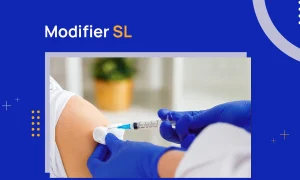Healthcare providers need to stay organized in their finances and process accurate payments. Two key documents that help in this process are the Electronic Remittance Advice (ERA) and the Explanation of Benefits (EOB).
While both of these documents provide details about insurance claim payments, their actual purpose, format, and usage differ a lot.
ERAs and EOBs work together to ensure smooth communication between providers (healthcare practices), payers (insurance companies), and patients. However, many people, including medical billers, get confused between the two.
That’s why it is important for both medical billers and patients to understand the difference between them.
Let’s discuss in detail the difference between ERA and EOB in medical billing.
What is Electronic Remittance Advice (ERA) in Medical Billing?
ERA is an abbreviation for Electronic Remittance Advice. An Electronic Remittance Advice (ERA) is the digital equivalent of an EOB. It is sent electronically by insurance payers to healthcare providers after a claim is processed.
This important document contains detailed information about the claim’s reimbursement status, the amount paid, adjustments, and denials, helping providers manage payments efficiently.
ERAs are, in most cases, formatted according to the X12 835 standard. This ensures consistency and compliance with HIPAA regulations.
Additionally, the healthcare industry is rapidly shifting from EOB to electronic remittance. As of 2024, approximately 80% of eligible healthcare providers have adopted ERA systems to receive payments from insurance companies.
Benefits of ERA
- Faster Delivery: ERA expedites the reimbursement process. In most cases, the payments are received within 2-3 business days, or sometimes even on the same day they are issued.
- Accuracy: Eliminates manual errors during payment posting.
- Efficiency: It saves time by facilitating the automated posting of payments into practice management software. According to a study by UHIN, providers can save 5 minutes of work per transaction by using electronic remittance advice.
- Cost Saving: The last but also the most important benefit of using electronic remittance advice is that it reduces the cost of the entire process. There is a $701 million cost savings opportunity annually for the medical industry through ERAs.
ERA Example
All ERAs more or less contain the following information:
- Provider and payer names
- Date of service
- Beneficiaries’ names
- Billed and allowed amounts
- Patient responsibility (e.g., copays, deductibles)
- Adjustments and their reasons
- Payment method and transaction details
To make things simpler for you, the following is a sample ERA:
The table below summarizes the information provided in the sample ERA above:
| Section | Details |
|---|---|
| EFT Trace Number | 210455726 |
| Patient Information | Name: Jennifer Phillips; HIC: V45564041; Account: 2764965 |
| Billed Amount | Total charged by the provider (e.g., $145.00, $55.00, $115.00 for services). |
| Allowed Amount | Approved portion by Medicare (e.g., $74.28, $29.99, $32.73 for services). |
| Service Paid Amount | Medicare payment for services (e.g., $58.23, $23.51, $25.66). |
| Adjustments (CAGCs) | Codes for adjustments (e.g., CO – Contractual Obligation). |
| Reason Codes (CARCs) | Specific adjustment reasons (e.g., CO-45 – exceeds fee schedule). |
| Patient Responsibility | The total amount the patient owes: $27.41. |
| Claim Totals | Billed: $315.00; Allowed: $137.00; Paid: $107.40; Patient: $27.41. |
| RARC Codes | Explanation for adjustments (e.g., MA01 – the right to appeal decision). |
What is The Explanation of Benefits (EOB) In Medical Billing?
An Explanation of Benefits (EOB) is a paper-based document sent by insurance payers to patients (unlike ERA, which is sent to the healthcare provider). It summarizes how the insurance company processed a claim, detailing the amounts covered, adjustments made, and the patient’s financial responsibility.
Unlike ERAs, there is no single format or standard for EOB documents, and different payers can have their own format. In some instances, EOBs are also formatted according to the X12 835 standard. However, all EOBs generally include the following key information:
- Patient and Insurer Details: Patient’s name, policy number, and other identifying information.
- Provider Information: The name of the healthcare provider or facility that rendered the service.
- Service Details: Descriptions of the medical services provided, including dates and places of service.
- Charges and Adjustments:
- Amount Billed: The total charge submitted by the provider.
- Allowed Amount: The negotiated rate the insurer agrees to pay for the service.
- Not Covered Amount: Any portion of the charge not covered by the plan.
- Patient Responsibility:
- Deductible: The amount applied toward the deductible.
- Copay: The fixed payment amount for the service.
- Co-Insurance: Patient’s share of the costs after the deductible is met.
- Total Amount Owed by Patient: The total amount the patient must pay to the provider.
- Payment Information: Details of the amount paid by the insurer to the provider.
- Remark Codes: Explanations for any adjustments or denials, often accompanied by standardized codes.
It is also worth noting that although EOB is a paper-based document, many initiatives are promoting paperless EOBs. These efforts are being made to reduce administrative costs. The success of these initiatives is also good. For instance, a pilot study by Healthx, Inc. reported a 57% adoption rate of paperless EOBs among participants, indicating a significant shift.
EOB Example
According to a 2018 report, approximately 30% of medical consumers do not understand EOB documents. That is why we have provided a simple sample and breakdown of an Explanation of Benefits (EOB) below:
How EOB and ERA Differ in Medical Billing?
Both ERA and EOB are important insurance claim documents and share some similarities. However, there are also several differences between them. Let’s discuss in detail the key differences between ERA and EOB in medical billing:
Distribution Channels for ERA and EOB
- ERA: Delivered electronically, ensuring faster processing. It is sent to healthcare providers in real-time to inform them about the payer’s decision.
- EOB: Sent via traditional mail, taking up to 90 days to reach the patient. In contrast to ERA, the EOB is sent to the consumer after the claim has been processed (mostly after the healthcare provider has been paid).
Intended Use and Perspective
The intent or purpose behind EOB and ERA is the same, i.e., to inform the end consumer (patient/ healthcare provider) about the payer’s insurance claim decision.
The difference between EOB and ERA intent arises when each recipient views the document from a distinct point of view. For instance, an EOB will let a patient know the amount that has been covered by his insurance and the residual amount that he has to pay himself.
On the contrary, the ERA will inform the healthcare provider whether or not the insurance company will approve the claim and how much can be reimbursed.
Content Breakdown and Focus
The electronic remittance advice and explanation of benefits also differ in terms of their content.
- ERA: Provider-oriented, including detailed claim adjustments, denials, and payment breakdowns.
- EOB: Patient-focused, summarizing insurance coverage and out-of-pocket expenses.
An interesting thing about ERA is that it doesn’t necessarily have to be about just one patient. Rather if a healthcare provider served multiple patients at the same time who had the same insurance payer and their claims were filed on the same day, then the payer might send a combined ERA.
Delivery Timeline
- ERA: Typically received within 2-3 weeks of claim submission.
- EOB: Often arrives after the provider’s payment, delaying reconciliation.
Final Thoughts
Understanding the difference between ERA and EOB is imperative for efficiency and transparency.
The payment records of all relevant parties, including you, the patient, and the insurance company, must always be the same. This is essential to secure timely reimbursements without payment disputes. ERA and EOB serve this exact purpose.
A lot of healthcare providers face difficulty in receiving and processing their ERAs. If you are facing the same issue, then our certified team of medical billers can help you. We provide hassle-free payment posting services that can boost your productivity. Our medical billing expertise includes decoding and processing ERAs and EOBs swiftly and accurately, reducing errors, and optimizing collections. This results in huge savings of your valuable time and resources.



